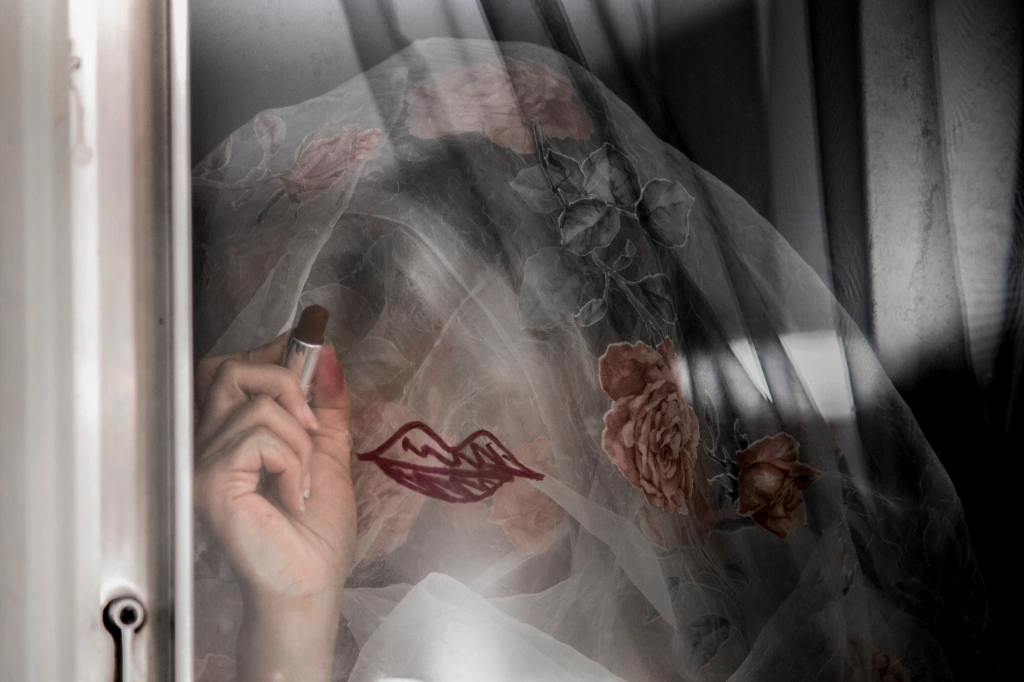MAKEUP (GRAFFITI ON FACE) – Raheleh Salim
OCTOBER 23, 2018

A historical Islamic revolution took place in 1979 in Iran that changed the life of people, especially that of women. Before 1979, women were not questioned because of their appearance in the streets. Wearing hijab became compulsory in Iran during the first few months after the Islamic Revolution in 1979. Gradually the government’s propaganda, policies, and policing of women’s hijab increased. Police harassed women in the streets for not observing a proper hijab and it became a routine occurrence over the years. Day by day, women tried to do consistent acts of defiance. They were letting more hair fall out of their headscarves and dressing in public with tighter manteaux and pants. They disobeyed the law intentionally since Iranian government’s policy of compulsory hijab deprived them of one of their primary rights — the right to wear what they want in public.
As a result of excessive restrictions, women gradually started to care more about their appearance and make a new look as an act of defiance. Famous makeup brands entered the market and Iranian girls became more willing to wear makeup. These girls sometimes spend hours in front of the mirror to do their makeup and often spend a lot of money for this. In fact, Iranian women became obsessed with physical beauty. For many, surgery and make-up is a reaction to the restrictive rules of compulsory hijab. It seems that radical and excessive limitations regarding basic women rights have caused a loss in their self-esteem and self-confidence. It has gradually become a significant part of Iranian culture.
In fact, plastic surgery and heavy makeup can be considered as different cultural expressions of freedom in restrictive regimes. These girls keep their veils but transform it from a symbol of modesty into a symbol of defiant fashion expressing their desire for freedom. Currently, Iranians are biggest consumer of make-up products after Saudi Arabia in the Middle East, and holds seventh place in the entire world.
With Makeup (Graffiti on Face), Salim represents the constrained and restricted atmosphere she experienced through this self-portrait, the multi-layered photograph indicating an ambiguous environment. Red lipstick is an instrument of act of defiance for freedom and make-up is a kind of graffiti drawn on the face of a woman.